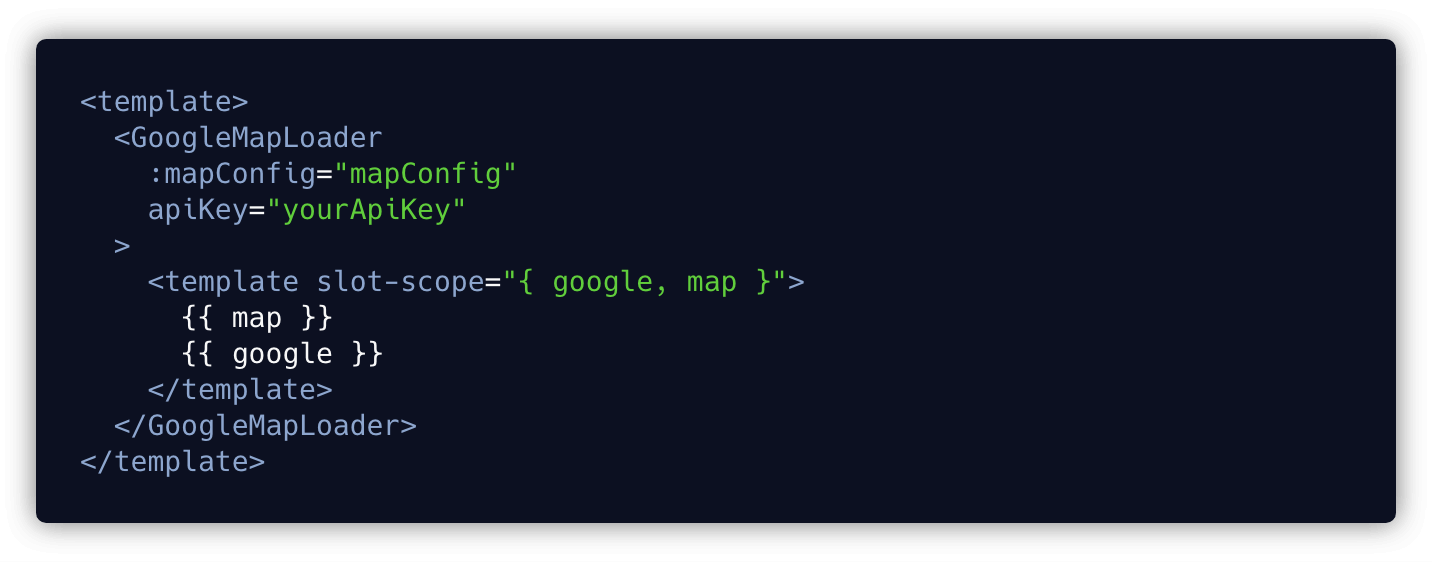Slot Props Vue
Practical Use Case of Vue Slots To pass down Html elements from one component to another. With props, Vue allows us to pass strings, objects, arrays, and functions from a parent component to its child component. Slots are a mechanism for Vue components that allows you to compose your components in a way other than the strict parent-child relationship. Slots give you an outlet to place content in new places or make components more generic. The best way to understand them is to see them in action. Let’s start with a simple example. Slots are another way in Vue for a component to inject content into a child component. This does this using template code. In terms of final output, slots perform a similar function as props in Vue — getting data from a parent component to a child component.
Vue 2.6 is released with new syntax for Slots using v-slot directive. In this tutorial, we’re gonna show you:
- Syntax to use Vue Slot with
v-slotdirective along with its shorthand - How to use Vue Named Slots with
v-slot& examples - How to use Vue
v-slotfor Scoped Slots & examples - Vue Dynamic slots example

Related Post: Vue 3 Composition API tutorial with examples
Contents
Vue slots syntax with v-slot directive
With new v-slot directive, we can:
– combine html layers: component tag and scope of the slot.
– combine the slot and the scoped slot in a single directive.
For example, this is old syntax with slot-scope:
This is how we combine ListComponent and template tag:
Vuetify Slot Props
And this is old named slots syntax:
Now we use new Vue v-slot directive:
You can see that:
– We use <template v-slot:header> to wrap <p> tag instead of <p slot='header'> directly. This is because Vue v-slot can only be used in <component> or <template> html tag. It cannot be used in plain HTML tags (<p> for example).
– We replace slot='content' slot-scope='{data}' with v-slot:content='{data}' by combining slot & slot-scope. With new Vue v-slot directive, all slots are compiled into scoped slots. It improves the performance. Why?
Normal slots are rendered during the parent component’s render cycle. So, if any dependency of a slot changes, both the parent and child components will be re-rendered.
When we use scoped slots, slots are compiled into inline functions and called during the child component’s render cycle. This means:
- data from a scoped slot are collected by the child component which is re-rendered separately.
- the changes of parent scope dependency only affect the parent, not the child component. So the child component doesn’t need to update if it uses only scoped slots.
Shorthand for v-slot
# is the shorthand for Vue v-slot directive.
For example, #content stands for v-slot:content.
The code above can be written as:
Remember that when using shorthand, we must always specify the name of the slot after # symbol. We cannot use shorthand like this: #='{item}'.
It must be: #default='{item}' in which, #default is the shorthand for v-slot:default.
In the next parts, we show you some examples that apply new Vue v-slot directive in practice.
Vue v-slot examples with Named Slots
If we want to use multiple slots in one component, Named Slots are useful.
The code below shows BkrCard component template with 3 slots:
- header
- title
- default
Remember that <slot> without name attribute has the name default.
Now look at the parent component which use v-slot directive to specify name for named slots on <template> tag:
The result will be:
If we pass only one named slot, the default value will be shown:
Vue v-slot example with default slot
In the example above, we use <template v-slot:default> for the default slot.
We have other ways to specify html code to be considered as default slot also:
– wrap it in a <template> without Vue v-slot directive:
– do not wrap it in a <template>:
The result are the same for 2 cases:
Vue v-slot examples with Scoped Slots
What we should do when we want a child component to allow parent component access its data?
In this example, categories need to be available to the slot content in the parent. So we bind the categories as an attribute to the <slot> element:
The categories attribute is called slot props.
In the parent scope, Vue v-slot directive can help us get value of the slot props above:
The result will be:
- Dart
- Flutter
- Vue.js

Slot Props Vue Free
This is shorthand for v-slot:
Vue Dynamic slots example
We can use a JavaScript expression in v-slot directive argument with square brackets:
Now look at the example:
Clicking on the Change button will change the collection value dynamically.v-slot:[collection]='{categories}' could become:
v-slot:default='{categories}'v-slot:new_categories='{categories}'
This is BkrCategories component with default and new_categories slot name:
The result will be:
Conclusion
We’ve learned almost aspects of new Vue v-slot directive, from v-slot syntax to its handshort, then apply v-slot directive on Named Slot examples to Scoped Slots and Dynamic Slots examples.
Happy learning! See you again!